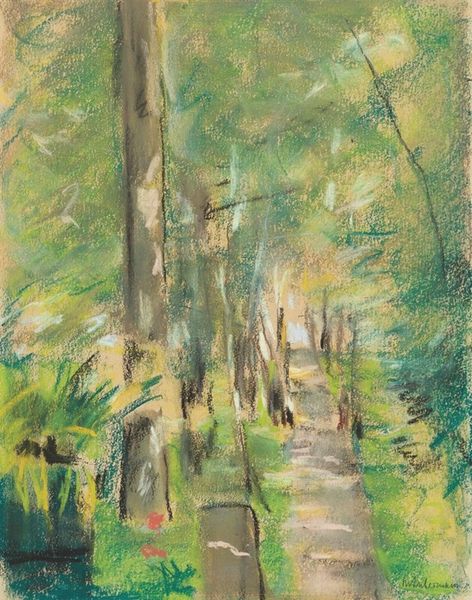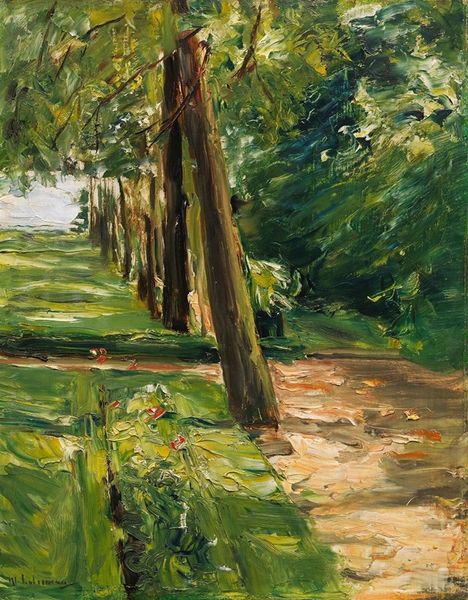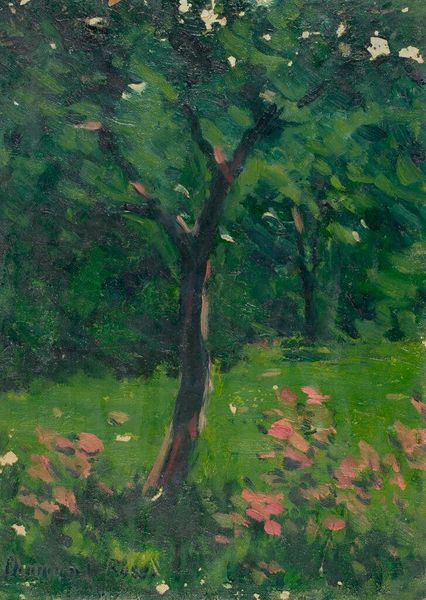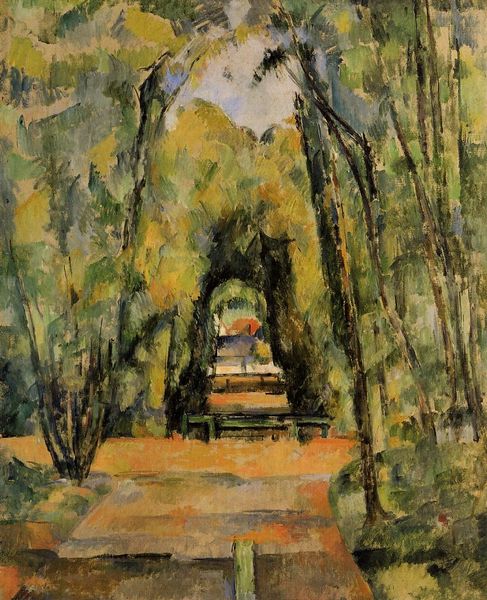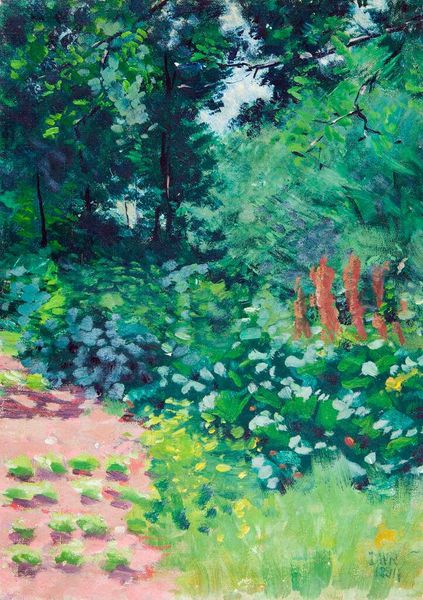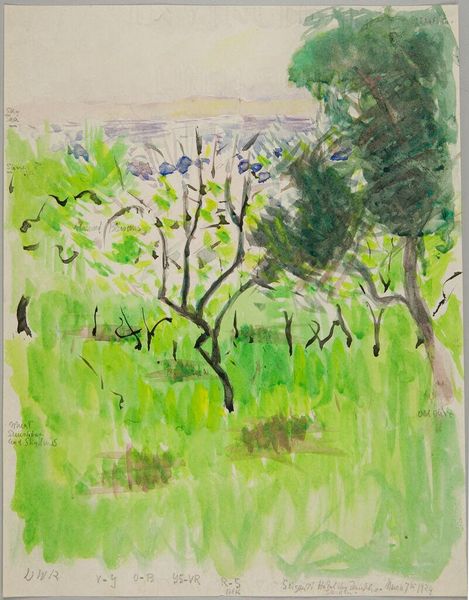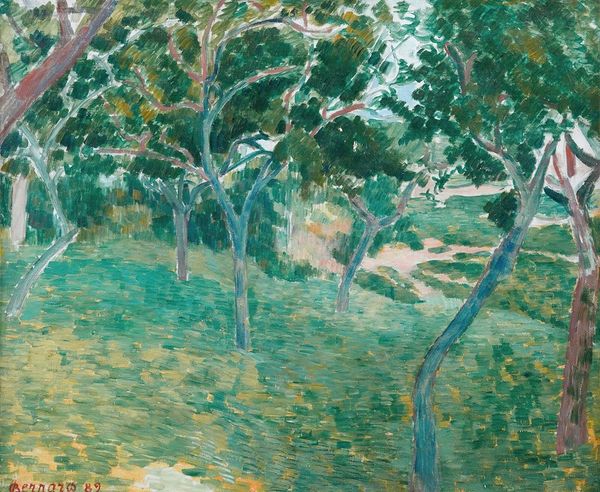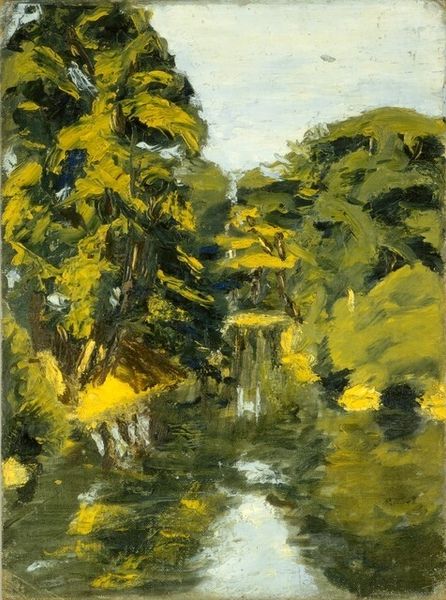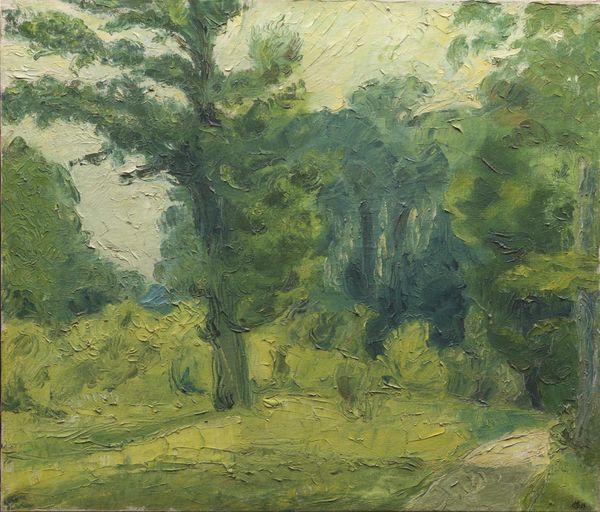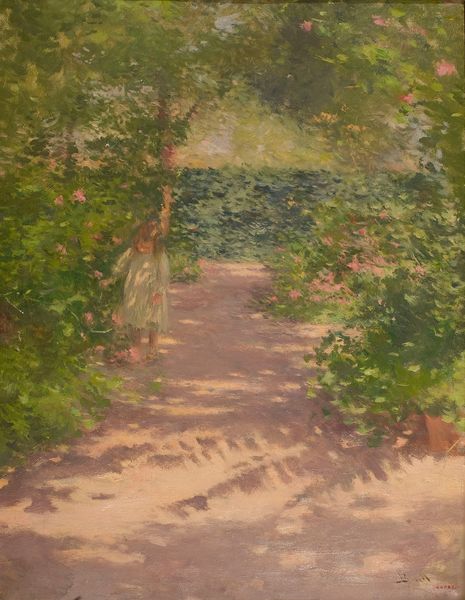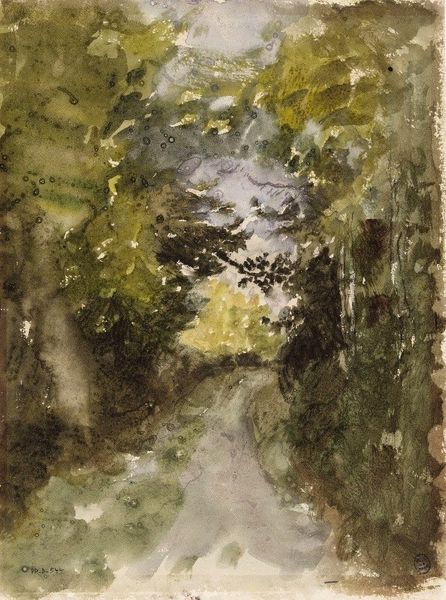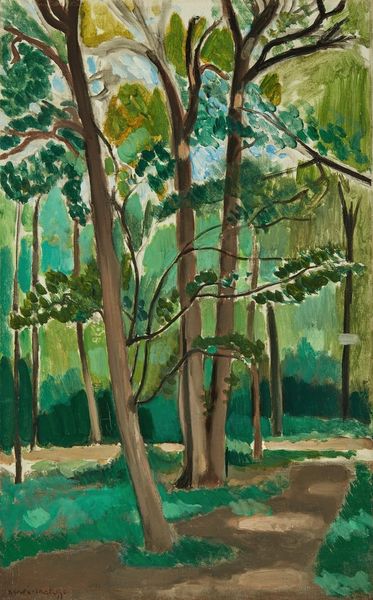
Copyright: Avigdor Arikha,Fair Use
Curator: So, we’re standing in front of Avigdor Arikha's "Jerusalem Landscape," an oil on canvas from 1994, part of a series he created en plein air. What are your initial thoughts? Editor: My first impression? Peace. I can almost smell the earth and the leaves, the air of a quiet morning walk. It feels both intimate and expansive; I’m drawn right into this small piece of forest. Curator: Indeed. It’s interesting to note that Arikha, after a period of abstraction, returned to realism with a focus on direct observation. He aimed to capture the immediate visual experience, a return to classical values within a modern context. What strikes me, though, is how such a familiar location transforms into something unique in his gaze. Editor: Right, there’s nothing "postcard pretty" about this, is there? It’s the Jerusalem no one expects to see. Look at that leaning tree, almost like a figure bowing, and the muted greens. It's real life caught raw. I feel he just slapped the paints as he saw them on site, as quick notes during a song. Curator: In a way, you're spot on. Arikha limited himself to working directly from life and often in a single session. This insistence on immediate perception has links to earlier traditions, particularly Impressionism and plein-air painting in the late 19th century, as he mentioned being inspired by Monet. Think how painting outside, confronting all environmental difficulties to create became radical in itself, in front of academic and studio-fabricated standards. Editor: True. This piece carries all of that energy—I’m talking sun in my eyes, the breeze rustling through the leaves as you paint. You are not trying to copy anything, just translating feeling. Also, it makes me think about how painting is always also an act of poetry, translating your surrounding’s light into marks. It’s kind of lovely when you stop to think about it. Curator: Absolutely. This is the meeting point, that spot in which both artistic creation and public display meet. Ultimately, that´s the space where society reflects on itself. What´s important here is to remember this work's artistic origins but also the historical weight. Editor: I think I will return here and sit on the floor watching it one more time. I need some of that serenity, I believe. Curator: A good idea, I will do the same. There's much more to see in his works that simple historical analysis may reveal.
Comments
No comments
Be the first to comment and join the conversation on the ultimate creative platform.
